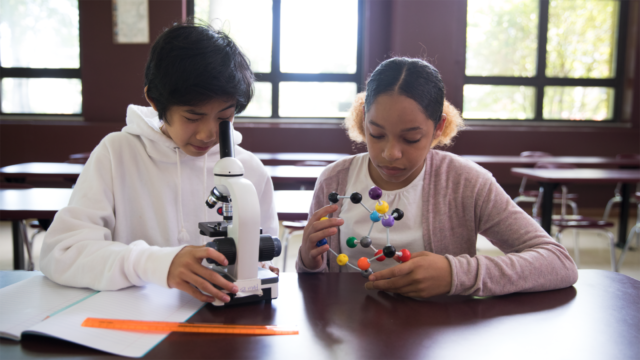
What does 100 look like? Students are often captivated by the huge jump in base ten blocks when going from 10 to 100 (to say nothing of the leap to 1,000!):

The number 100 is a big number, for sure. There's a lot you can buy with $100. If you do 100 repetitions, that’s a major exercise. And after 100 days of school, you can celebrate how much you’ve accomplished—with a 100th day of school gumball machine printable!
100th day gumball machine project
With gumballs, not only can you help students visualize 100, but you can also do it in color and with candy. Use our free 100th day gumball machine templates and the activities below to celebrate. We've got worksheets and activities, whether you want the gumballs pre-filled with numbers or not!
100 gumball machine without numbers
Count to 100, grades PreK-K
Are your students still mastering counting? Give them a feel for just how big 100 is—in gumball form! Let them pick any gumball to start with a label it “1.” Then, have them label every gumball a different number until they get to “100.” Can they do it so that every gumball is touching the next one?
- Learning objective: Count to 100 (K.CC.A.1)
Cluster color, grades K-2
Have students group all of the gumballs into clusters of 2, 4, 5, 10, 20, 25, or 50. Then have them color each cluster the same color. What equations can they make based on how they colored the gumballs? (For example, if they chose clusters of 20, the equation could be 20 + 20 + 20 + 20 + 20 = 100.)
- Learning objective: Add within 100 (1.NBT.C.4)
Base exploration, grades 9–12
Some students may be interested in how numbers don’t actually have to be in base 10! We can imagine a world in which the digits “stop” at 8 instead of 9, so counting would look like “…5, 6, 7, 8, 10, 11, 12, 13….” Or we can imagine a world in which there’s another digit after 9 that we could label A: “…5, 6, 7, 8, 9, A, 10, 11, 12, 13….” If you’re interested in exploring this part of mathematics with students, show them what it means to be in a base other than 10, then have them count 100 gumballs in a different base.
- Learning objective: Reason abstractly about number systems (Math Practice MP2)

100 day gumball machine with numbers
Prime project, grades 3-5
Turn the gumball machine into a prime project. Have students color the number 2 black, then all multiples of 2 one color. Then have them color 3 black, then all remaining multiples of 3 a different color. Repeat this process with every number left uncolored: 5, 7, 11, and so on until there are no more gumballs left to color. Why are all the prime gumballs black? And what’s special about 1? (Answer: By coloring all multiples of a number, you color every composite number, leaving only the original prime number black. The number 1 is unique because it's a factor of every number, so it is not considered prime.)
- Learning objective: Gain familiarity with factors and multiples (4.OA.B.4)
20 questions, grades 3-8
Choose one of the gumballs. One at a time, students get to ask a yes/no question about the gumball you chose. For example, “Is the number even?” “Does the number contain a zero?” “Is the number prime?” How many questions does it take until a student correctly guesses the number? Once a student does, switch it up! Now that student chooses a number and has to answer everyone else’s questions.
- Learning objective: Generalize numerical patterns and place value understanding for multi-digit whole numbers (4.NBT.A)
Guess my rule, grades 3-8
Looking to turn the 100-day gumball machine into a game? Let students come up with a rule for coloring the gumballs. Here are some examples:
- 1–10 are one color. 11–20 are a different color. And so on for every set of 10 gumballs.
- Even numbers are blue, odd numbers are either red (end in 1 or 3) or yellow (end in 5, 7, or 9)
- If the first digit is less than the second digit, color the gumball blue. If it’s greater than the second digit, color the gumball purple. If all digits are equal, color the gumball green.
Students then pass their final coloring to another student (or send a photo if completing online), and the other student tries to figure out the rule.
- Learning objective: Understand the meanings of place value digits (4.NBT.A.2)

***
Looking for more math content that will inspire passionate learners and nurture budding mathematicians? Explore whether HMH Into Math and Into AGA are right for your school.
This blog, originally published in 2021, has been updated for 2025.
Be the first to read the latest from HMH's blog, Shaped.














